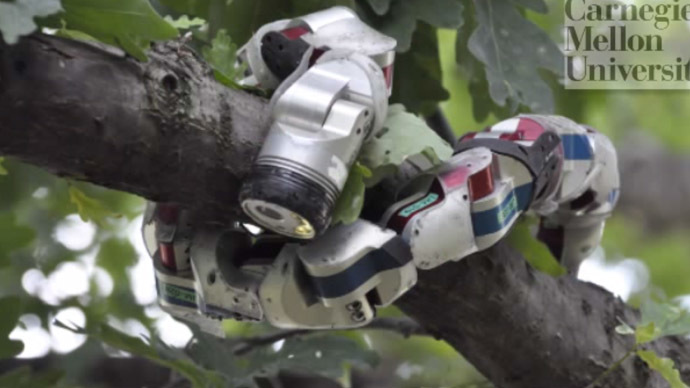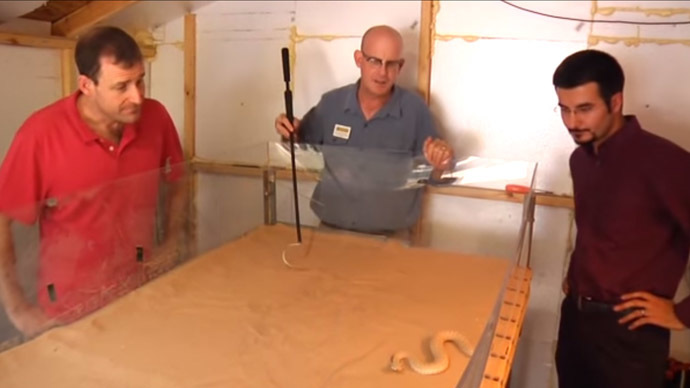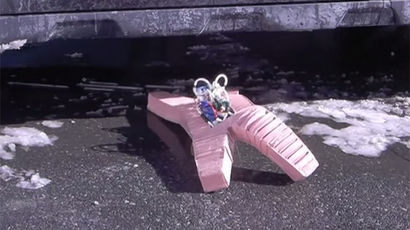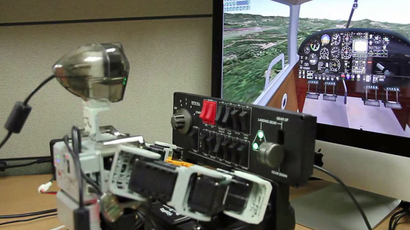Robot snake mimics sidewinder motion, conquers sandy slopes (VIDEO)

A robot snake, built for a project to uncover the secret of sidewinder rattlesnake locomotion, has learnt a few tricks from nature and can now climb up slippery sand dunes. Such robots, researchers say, can be useful in search and rescue missions.
In a study published in the latest Science Journal issue, a group of scientists applied the new insights from observing sidewinder rattlesnakes (Crotalus cerastes) to build a new model robotic serpent and calculate the best approach for snakes and their mechanical imitators to scale sandy slopes without slipping back down.
“Our initial idea was to use the robot as a physical model to learn what the snakes experienced,” said Daniel Goldman, an associate professor at Georgia Tech’s School of Physics. “By studying the animal and the physical model simultaneously, we learned important general principles that allowed us to not only understand the animal, but also to improve the robot.”
Before the study, the robot only used one component of sidewinding motion to relocate across level ground. However, it could not ascend sand slopes like real snakes do. So researchers from the Georgia Institute of Technology, Carnegie Mellon University and Oregon State University collaborated to focus on understanding both horizontal and vertical motion of the animals.
Together with Zoo Atlanta researchers built a sand enclosure that could be moved to create different angles. By observing the real snakes in an inclined sand environment, recorded with high speed cameras for motion analysis, researchers report that on steeper slopes the reptiles increased their contact with the surface.
“Think of the motion as an elliptical cylinder enveloped by a revolving tread, similar to that of a tank,” said Howie Choset, a Carnegie Mellon professor of robotics. “As the tread circulates around the cylinder, it is constantly placing itself down in front of the direction of motion and picking itself up in the back. The snake lifts some body segments while others remain on the ground, and as the slope increases, the cross section of the cylinder flattens.”
From that analysis, scientists specifically designed the modular snake robot to pass “horizontal and vertical waves through its body to move in three-dimensional spaces,” Georgia Institute of Technology said in a press release.
The serpent robot – called Elizabeth – was programmed to mimic the real snake and increase the length of contact with surface depending on its incline. The machine, built by Choset, is two inches in diameter and 37 inches long consisting of 16 joints.
WATCH MORE:Bio-inspired soft robot goes off-leash (VIDEO)

The new robot snake can slide over rough terrain, slink through tight cracks, and maneuver around debris – tasks which other kinds of robots are unable to do. This allows humans to potentially apply the new technology in a number of ways, for instance rescuing survivors trapped under the rubble, inspect dangerous environments or be used for scientific purposes in archeology.
“If we have the opportunity to return to Egypt, we’d use this capability,” creator of serpent robot told the National Geographic. "Archaeology is like search and rescue except everyone’s been dead for thousands of years so there’s no rush.”














